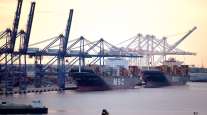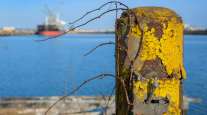Staff Reporter
Maryland-Virginia Partnership Will Rebuild American Legion Bridge
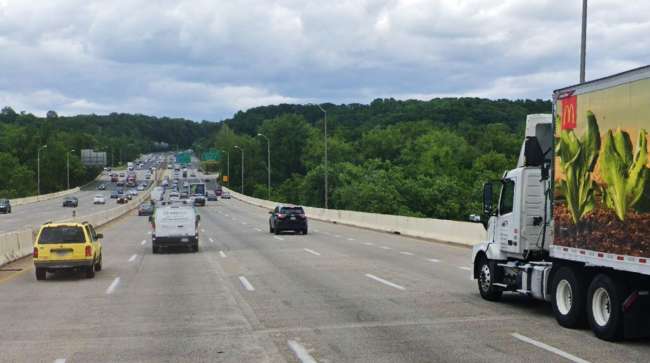
[Stay on top of transportation news: Get TTNews in your inbox.]
WASHINGTON — The governors of Virginia and Maryland have announced an agreement to rebuild and modernize the American Legion Bridge, which forms a vital link between the two states.
The American Legion Bridge carries Interstate 495, known as the Capital Beltway, over the Potomac River between Montgomery County and Fairfax County. These counties are home to 35% of the region’s jobs and households, according to the Greater Washington Partnership.
Virginia Gov. Ralph Northam and Maryland Gov. Larry Hogan announced the Capital Beltway Accord at the Capital Region Transportation Forum on Nov. 12. The forum was hosted by the Greater Washington Partnership and the Greater Washington Board of Trade.
The new bridge, which will cost approximately $1 billion, is projected to have 12 lanes: eight regular traffic lanes and four tolled express lanes (two on each side). The project also will include a pedestrian and bicycle crossing. The existing structure has 10 regular traffic lanes. Work on the public-private partnership project is expected to begin in 2022.
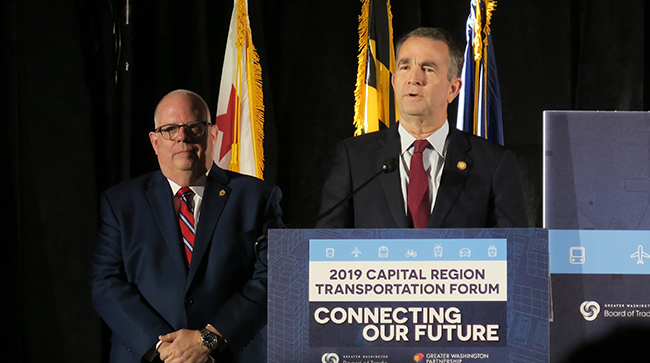
Northam (right) speaks about the project while Hogan looks on. (Eleanor Lamb/Transport Topics)
“The result will be less traffic, more peace of mind, cleaner air and a better quality of life,” Hogan said.
Northam said that Maryland owns 79% of the American Legion Bridge and Virginia owns 21%. Virginia Transportation Secretary Shannon Valentine said Virginia will be responsible for tolling going north and Maryland will be responsible for tolling going south.
Maryland Transportation Secretary Pete Rahn said project organizers will make requests available to the P3 community soon. He also mentioned the new bridge will connect to other tolled roads in the area. Hogan’s Traffic Relief Plan proposes using P3s to add toll lanes to I-270 in Montgomery County and I-495, which passes through Montgomery and Prince George’s counties.
“It all is part of the idea of the system of systems,” Rahn said. “That’s how we have to look at transportation. What we know is that, without some pricing mechanism that will incentivize people to use the roads at specific times, roads will just fill up.”
In Maryland, Rahn said 34 homes have been identified as “theoretically impacted” by the project, although the P3 concessionaires will be incentivized to avoid homes. No homes in Virginia have been identified as theoretically impacted.
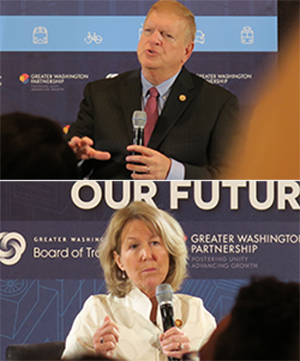
Rahn (top) and Valentine speak at the event. (Eleanor Lamb/Transport Topics)
Northam cited a Virginia study completed in 2015 that examined all Potomac River crossings and found the American Legion Bridge to be the busiest and most congested. Despite investments in public transportation and roads, Washington-area congestion is expected to grow in the coming years.
“Drivers on the Capital Beltway face some of the worst congestion in America,” Hogan said. “The problems of the region cannot truly be solved unless our states work together.”
Transportation leaders also plan to modernize the stretches of I-495 that approach I-95 in Virginia and I-270 in Maryland. Valentine noted the system leading to and away from the bridge must be able to accommodate the volume of traffic that the new bridge will allow.
“What we have found, as we have looked at I-270, is that I-270 does not work without the American Legion Bridge and the American Legion Bridge does not work without I-495 over to I-95,” Rahn said.
The Washington area is important for freight movement. The intersections of I-95 at I-495 North and I-495 at I-270 West both appear on the American Transportation Research Institute’s list of top truck bottlenecks. Valentine said the new bridge is meant to increase mobility for freight haulers and commuters alike.
“Obviously, interstates are designed to not just move people, but goods, and that is something that we take into consideration in everything we do,” Rahn said.
Want more news? Listen to today's daily briefing:


